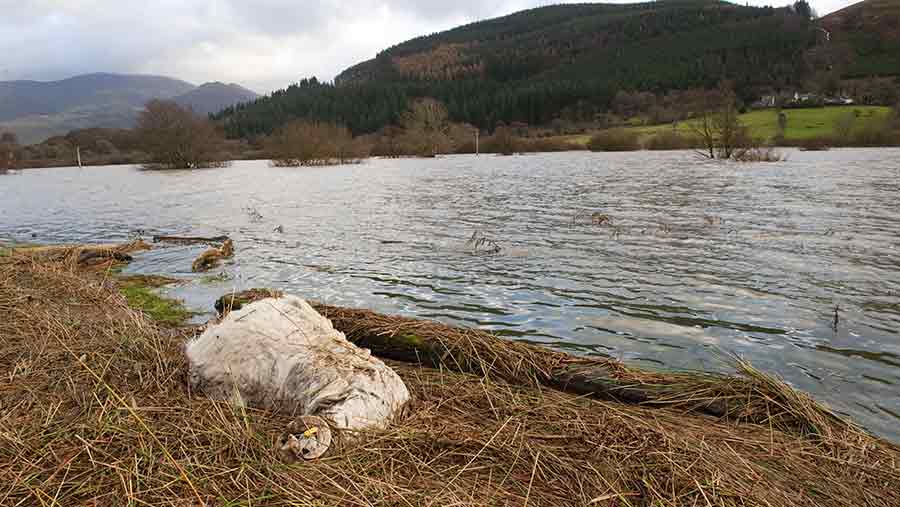More rain forecast after floods devastate farms
 Flooding in the market town of Appleby, Cumbria © WittWooPhoto/Rex Shutterstock
Flooding in the market town of Appleby, Cumbria © WittWooPhoto/Rex Shutterstock Further rain is forecast after flood water engulfed farms and farmland across northern England, Wales and the Scottish borders.
Bridges, stone walls, roads and buildings were destroyed and animals drowned by rising water and landslides as Storm Desmond battered Britain.
Unconfirmed reports suggest 130 sheep were drowned in Cumbria, where an estimated 341mm of rain fell at Honister in 24 hours from 6.30pm on Friday (4 December).
See also: Volatile weather ‘threatens UK food production’
If verified, this will be a UK record for 24 hours – and the equivalent of more than a month’s worth of rainfall in a single day.
Some 46 severe flood warnings – issued when there is danger to life – remained in place in north-west England as of 8.52am on Monday (7 December).
Persistent rain, heavy at times, would affect parts of Scotland, north-west England and Wales from the same afternoon onwards, said the Met Office, although it would be less extreme.
“Please be aware that in view of the saturated nature of the ground and high river levels further localised flooding and disruption to transport is possible,” it said.
The warning follows some of the worst weather in living memory.

Extensive flooding near Welshpool, Powys, when the River Severn burst its banks © Graham M. Lawrence/LNP/REX Shutterstock
At Caltwaite, some 40 sheep were hauled from the River Petteril by members of the fire service.
A landslide bulldozed into buildings at Raisgill Hall, on a tributary of the River Lune, near Gaisgill, about three miles east of Tebay.

At 10.40am on Monday (7 December), the Environment Agency had 46 severe flood warnings, 38 warnings and 39 alerts in force across the UK © Gov.uk
Hundreds of hectares of land were left under water adjacent to the railway line as the River Eden burst its banks at Little Salkeld, near Penrith.
Alistair Birkett, who farms at Paxton, beside the River Tweed, was left with 22ha (55 acres) of winter wheat under water. “We’re very fortunate,” he said.
It was a similar situation in the Scottish Borders and north Northumberland, where the McGregor family were left with 160ha under water at Coldstream.
Farmers across the north had been severely affected with fences and walls swept away and much of land under water, said Teg Ogden, auctioneer at Craven Cattle Mart, Skipton.
Gimmer hoggs and breeding sheep needed emergency winter keep, said Mr Ogden, appealing for help in a Facebook post.
The Forage Aid charity, which provides feed and bedding to farmers whose livestock have been affected by extreme weather, said it was on standby to provide help to producers.
“Our team is in hourly contact with farmers in the heart of the floods and apart from odd cases, livestock is OK at present,” it said.
Defra secretary Liz Truss chaired an emergency Cobra meeting as the government responded to widespread flooding on Sunday (7 December).
“Unprecedented levels of rainfall mean that the water in some areas has risen to levels never seen before,” she said afterwards.
“That has meant that while flood defences have delayed and reduced the impact, we have seen some water overtopping defences in places.”
Storm Desmond had largely passed, but rivers remained swollen and the ground was saturated by significant volumes of rain over a period of weeks.
The military had established an operations centre to co-ordinate the response with 350 personnel and equipment available to get help to communities most in need as quickly as possible.
This included a Chinook helicopter deployed and on standby to assist.

